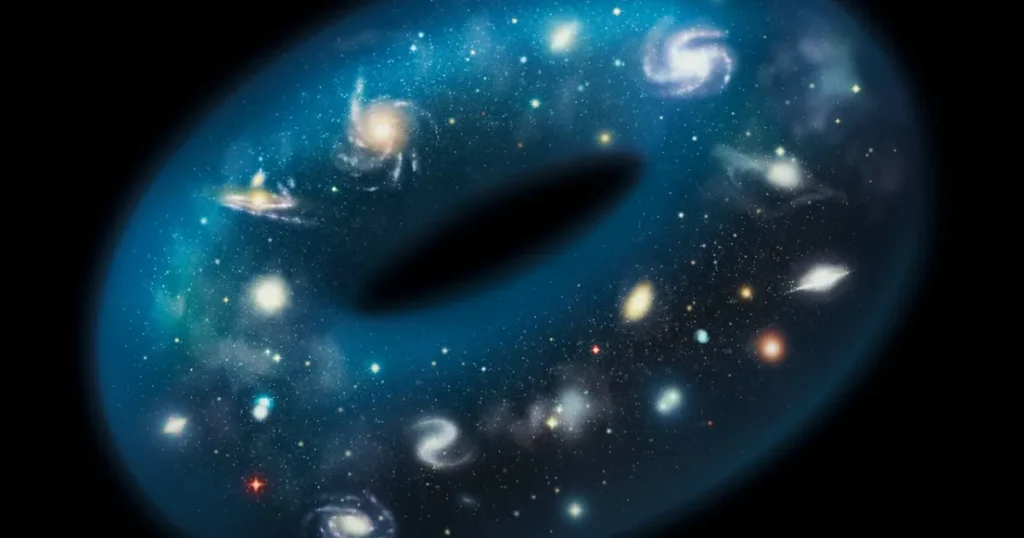The debate around the shape of the Earth has been largely settled, with overwhelming evidence supporting a round planet. However, the conversation around the universe’s structure remains far more complex and controversial. Recently, a bold new theory has emerged in the field of astrophysics, challenging traditional views about the shape of the universe itself. In this article, we will delve into this groundbreaking theory and explore its implications for our understanding of the cosmos.
Understanding the Current Consensus in Cosmology
Before we dive into the new theory, it’s essential to understand the prevailing views in cosmology:
- The Universe is Expanding: The Big Bang Theory posits that the universe has been expanding since its inception approximately 13.8 billion years ago.
- Cosmic Microwave Background Radiation: This remnant heat from the Big Bang supports the notion of a homogeneous and isotropic universe.
- The Shape of the Universe: Presently, the universe is considered to be flat based on measurements from the Wilkinson Microwave Anisotropy Probe (WMAP) and Planck satellite.
A Bold New Theory: Challenging the Status Quo
Recently, researchers have proposed a new theory that suggests the universe might not be as flat as previously believed. Here’s a breakdown of the core ideas surrounding this bold hypothesis:
The Foundation of the Theory
- Curvature Beyond Familiar Dimensions: While space is often interpreted as three-dimensional, some theorists argue that additional dimensions may significantly influence cosmic structure.
- Variable Geometry: The proposed theory implies that the geometry of the universe is not uniform; it can curve and bend based on mass and energy distribution.
- Quantum Effects: Incorporating quantum mechanics into cosmological models allows for interactions that can alter the perceived shape and expansion of the universe.
Implications of the New Theory
The implications of accepting this new framework are vast and challenging:
- Revisiting Cosmological Models: This theory necessitates a reevaluation of existing models, leading to the potential discovery of new cosmic phenomena.
- New Perspectives on Dark Matter and Dark Energy: An altered view of the universe’s shape could provide insights into the elusive nature of dark matter and dark energy, which continue to puzzle astronomers.
- Innovative Technologies and Measurements: Such a theory could inspire novel technologies and methodologies for measuring cosmic distances and structures.
The Intersection of Theoretical Physics and Astronomy
This emerging theory exemplifies the crossover between theoretical physics and observational astronomy. Physics often relies on mathematics and theoretical constructs to describe phenomena, while astronomy offers empirical data that can either support or dismantle these ideas. Let’s explore how this new theory embodies this intersection:
The Role of Mathematics in Cosmology
- Mathematical Models: Theoretical physicists create mathematical models to simulate cosmic phenomena, allowing predictions about the universe’s structure.
- Statistical Analysis: Data from telescopes and satellites must be analyzed statistically to draw meaningful conclusions and ascertain valid patterns.
- Limitations of Current Models: Current models based on a flat universe may not fully capture cosmic anomalies observed through the latest astronomical technologies.
Utilizing Advanced Observational Tools
In this age of technological advancement, astrophysicists have access to a variety of tools that could provide evidence supporting or refuting the new theory:
- Gravitational Waves: Observations from gravitational wave detectors may yield insights into the curvature and dimensions of the universe.
- NextGen Telescopes: Upcoming projects like the James Webb Space Telescope aim to gather more detailed data about cosmic structure, which could be pivotal.
- Particle Accelerators: Experiments at facilities such as CERN may shed light on quantum effects influencing cosmic shapes.
Challenges Ahead: Acceptance and Analysis
As with any groundbreaking theory, there will be challenges in gaining acceptance within the scientific community:
- Skepticism Among Scientists: Scientific inquiry thrives on skepticism, and a new theory will face rigorous testing and scrutiny.
- Need for Predictive Power: A successful theory must not only explain existing observations but also predict new outcomes that can be empirically tested.
- Diverse Cosmos Perspectives: Theories may need to coexist, as the cosmos is complex, and a single narrative may not encapsulate its varied phenomena.
Conclusion: The Future of Our Cosmic Understanding
The proposal of a non-flat universe opens a new chapter in cosmology and astrophysics. As researchers pursue this theory, the potential advancements in our understanding of the universe could reshape science’s narrative, pushing boundaries and sparking curiosity in science students, physicists, and technical enthusiasts alike.
What’s clear is that the conversation about the universe’s shape is far from over. With more data and innovative tools, we remain on the frontier of discovery, eager to unravel the mysteries of our cosmos.
Further Reading
“`


